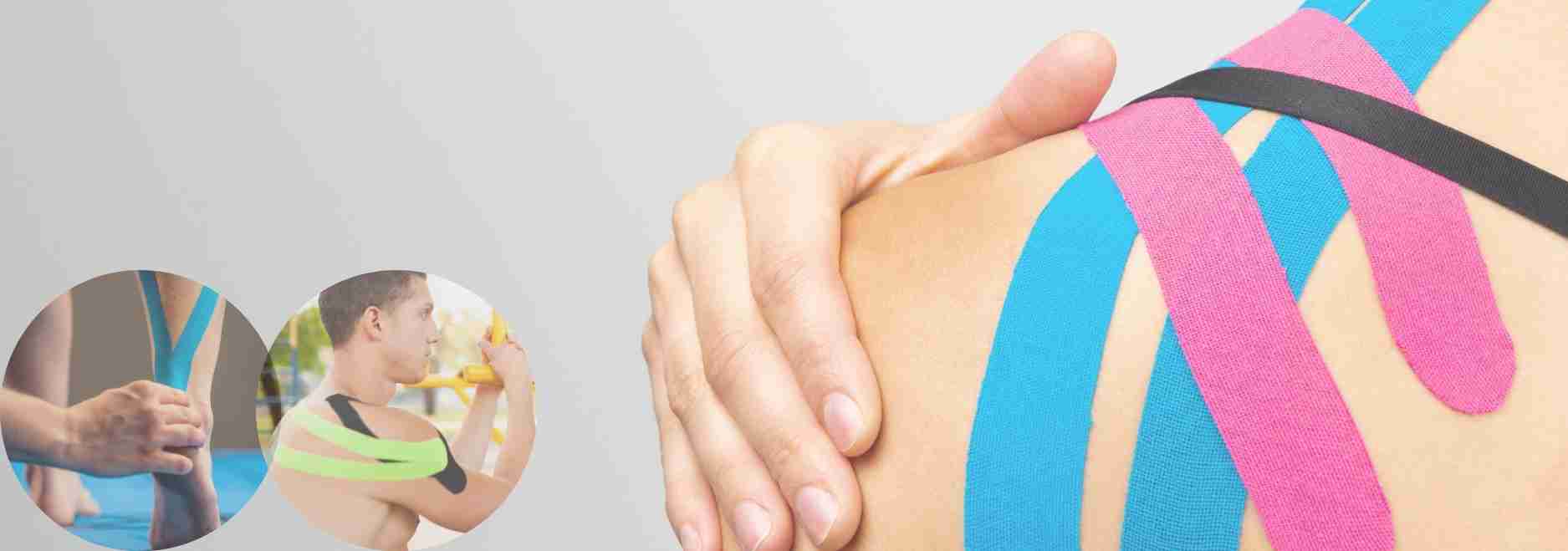Harnessing the Kinesiology tape trend to prevent or even enhance sports performance.
Unveil the dynamic relationship between kinesiology tape and meridian lines for enhancing chi energy, and explore this integrative approach’s benefits, techniques, and scientific insights.
Kinesiology tape, a widely used therapeutic tool in sports and physical therapy, intersects fascinatingly with the ancient concept of meridians and chi energy from Traditional Chinese Medicine (TCM). This article explores the synergy between these two domains, offering insights into how they can be combined to promote holistic well-being. It is both the kinesiologist and physical education teacher in me who want to combine both these concepts.
Exploring the Intersection of Kinesiology Tape and Meridians
Kinesiology tape, known for its elastic and adhesive properties, is often used to support muscles and joints. When applied along the meridian lines, which are believed to be pathways for chi (vital life energy), it enhances the flow of energy and aids in balancing the body’s systems, especially when the colour of the tape is the same frequency as the colour of the meridian channel.
History and Development of Kinesiology Tape
Kinesiology tape was developed in the 1970s by Dr. Kenzo Kase, a Japanese chiropractor, with the intention of providing support to muscles and joints without restricting movement. Its evolution has made it a staple in sports medicine and physical therapy.
Defining Chi: Concepts in Traditional Chinese Medicine
Chi, or Qi, is a fundamental concept in TCM, representing the vital life force that flows through the body. According to TCM, the smooth flow of chi is essential for maintaining health and well-being. In holistic clinical Kinesiology sessions, the meridian is used to shift not only chi energy but also physical discomfort and emotional baggage and restore biochemical balance. Kinesiology tape can be applied in specific patterns along the meridians to enhance the flow of chi, addressing energy imbalances and promoting healing.
Mapping the Meridians: Understanding Energy Pathways

This can be easily done from the comfort of your own home by searching for specific techniques to enhance joint stability through the normal range of motion and understanding the meridian channels associated with the joint. However, it’s relatively straightforward for joints like the knee, ankle, elbow, and wrist but more complex for the hip, shoulder, and neck.
To determine the appropriate meridian and colour channels for your injury or joint, consider the following questions:
- What was your emotional state at the time of the injury? Were you feeling fear (Kidney meridian), excitement (Triple Warmer), or anticipation (Liver)? Identify the dominant emotion that overwhelmed you (e.g., Kidney for fear, Triple Warmer for excitement).
- How is the injury protecting you? Think about how you might need to level up, step up, or challenge yourself to adapt to your current situation.
- Has this injury prompted you to let go (Lung and Large Intestine meridian), express more passion (Triple Warmer/Circulation Sex meridian), channel anger for change (Liver and Gallbladder meridian), absorb more information or guidance (Small Intestine or Stomach meridian), ignite your passion (Heart Meridian), or reflect on your progress and the importance of solid foundations? Consider which of these aspects resonate with your healing process.
Documented Benefits of Using Kinesiology Tape on Meridians
Numerous testimonials and some studies suggest benefits such as improved energy flow, pain relief, and enhanced well-being when kinesiology tape is applied along meridians. These benefits, however, are often subjective and can vary from person to person. No official study has been done that I am aware of yet.
Testimonials and User Experiences
Personal experiences often underline the potential of kinesiology tape in enhancing chi flow. Users report feelings of relaxation, reduced pain, and increased energy, although these effects are anecdotal and vary widely.
Use in Athletics for Energy Balance and Performance
In the realm of sports and fitness, kinesiology tape is increasingly being used for injury prevention and recovery and for enhancing energy balance and athletic performance.
Integrating Kinesiology Tape into Holistic Health Practices
Beyond sports medicine, kinesiology tape is finding its place in holistic health practices, where it’s used in conjunction with other techniques like acupuncture and massage to promote overall wellness.
Step-by-Step Guide to Applying Tape on Meridian Lines
A detailed guide can help users apply kinesiology tape along specific meridian lines, ensuring safety and maximizing the potential benefits.
FAQs
- How does kinesiology tape work in relation to chi energy and meridians? Kinesiology tape is believed to help regulate the flow of chi energy by influencing the meridian lines when applied correctly, potentially leading to improved physical and energetic balance.
- Is there scientific evidence supporting the use of kinesiology tape on meridians? While there is growing interest and some positive anecdotal reports, scientific evidence is still limited, and more research is needed to substantiate these claims.
- Can anyone apply kinesiology tape to meridians, or is professional guidance needed? While basic applications can be done by individuals, professional guidance is recommended, especially for specific therapeutic purposes, to ensure safety and effectiveness.
- Are there any risks associated with using kinesiology tape on meridian lines? If not applied correctly, kinesiology tape can potentially cause skin irritation or discomfort. It’s important to use the tape as directed and consult a healthcare professional if you have sensitive skin or health concerns.
- Can kinesiology tape be used alongside other therapies for enhancing chi energy? Yes, kinesiology tape is often used in conjunction with other therapies such as acupuncture, massage, and energy healing practices to enhance the overall effectiveness of treatment and promote holistic well-being.
- How long should kinesiology tape be left on when applied to meridian lines? The duration can vary depending on the individual’s needs and the specific application, but typically, it can be worn for several days. It’s important to follow the guidance of a healthcare professional.

